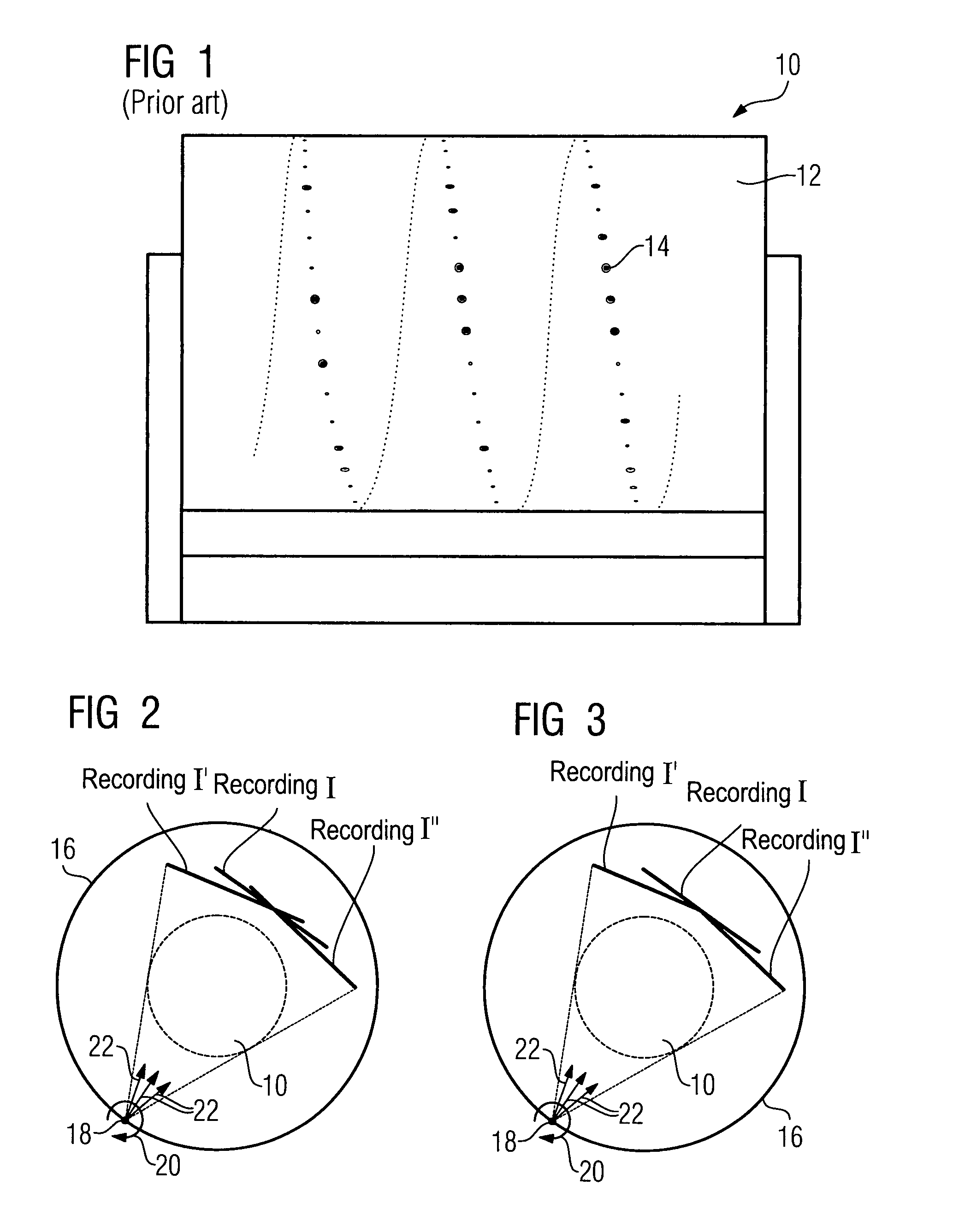Method for determining gray-scale values for volume elements of bodies to be mapped
a technology of grayscale values and volume elements, applied in the field of determining grayscale values for volume elements of bodies to be mapped, can solve the problem that the projection image is not sufficient to fully map a body
- Summary
- Abstract
- Description
- Claims
- Application Information
AI Technical Summary
Benefits of technology
Problems solved by technology
Method used
Image
Examples
Embodiment Construction
[0022]FIGS. 2 and 3 show a circular arc 16 defined by a fall rotation of an x-ray image recording system comprising x-ray source and x-ray detector, e.g. by a 360-degree rotation of an x-ray C-arm. A marked point 18 in each case indicates the origin of x-ray radiation, in other words the focus within an x-ray source. The point 18 is simultaneously a center of rotation for the x-ray source, the circular arrow 20 illustrating the rotation. The x-ray radiation is radiated in the direction of the arrows 22 in three different recordings I′, I, I″. The calibration phantom 10 from FIG. 1 is mapped if the maximum size for this is chosen. In this case the expansion of the x-ray radiation emitted by the x-ray source is not sufficiently large that all parts of the calibration phantom 10 are mapped on recording I′, the first different projection image. Nor is the calibration phantom 10 fully visible on recording I″, the second different projection image. It is now a matter of creating a virtual...
PUM
 Login to View More
Login to View More Abstract
Description
Claims
Application Information
 Login to View More
Login to View More - R&D
- Intellectual Property
- Life Sciences
- Materials
- Tech Scout
- Unparalleled Data Quality
- Higher Quality Content
- 60% Fewer Hallucinations
Browse by: Latest US Patents, China's latest patents, Technical Efficacy Thesaurus, Application Domain, Technology Topic, Popular Technical Reports.
© 2025 PatSnap. All rights reserved.Legal|Privacy policy|Modern Slavery Act Transparency Statement|Sitemap|About US| Contact US: help@patsnap.com



